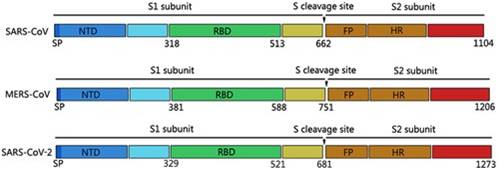Recombinant Human Galectin-3(Discontinued)
Shipping Info:
For estimated delivery dates, please contact us at [email protected]
| Amount : | 50 µg |
| Purification : | Purity: >= 98% by SDS-PAGE gel and HPLC analyses. |
| Content : | This recombinant protein is supplied in lyophilized form. |
| AA sequence : | ADNFSLHDAL SGSGNPNPQG WPGAWGNQPA GAGGYPGASY PGAYPGQAPP GAYPGQAPPG AYHGAPGAYP GAPAPGVYPG PPSGPGAYPS SGQPSAPGAY PATGPYGAPA GPLIVPYNLP LPGGVVPRML ITILGTVKPN ANRIALDFQR GNDVAFHFNP RFNENNRRVI VCNTKLDNNW GREERQSVFP FESGKPFKIQ VLVEPDHFKV AVNDAHLLQY NHRVKKLNEI SKLGISGDID LTSASYTMI |
| Alternative Name : | Galactose-specific lectin-3, IgE-binding protein, MAC2, L-29, CPB-35 |
Source:E.coliLectins, of either plant or animal origin, are carbohydrate-binding proteins that interact with glycoproteins and glycolipids on the surface of animal cells. The Galectins are lectins that recognize and interact with Beta -galactoside moieties. Galectin-3 regulates a number of biological processes, including embryogenesis, inflammatory responses, cell progression and metastasis. Galectin-3 is normally expressed in epithelia of a variety of tissues, including colon and endometrium, and in various inflammatory cells, including macrophages. Galectin-3 can function intracellularly, controlling the cell cycle and preventing T-cell apoptosis, and also extracellularly, by activating various cells, including monocytes/macrophages, mast cells, neutrophils, and lymphocytes. Expression of Galectin-3 is affected by neoplastic transformation, being up-regulated in certain types of lymphomas, and in thyroid and hepatic carcinomas. Conversely, it is down-regulated in other cancers such as colon, breast, ovarian, and uterine. Recombinant Human Galectin-3 is a globular 26.0 kDa protein containing 250 amino acid residues, but no disulfide bonds.
Determined by its ability to chemoattract human blood monocytes. Chemotactic activity was observed at a concentration of 2.5 µg/ml with a peak response obtained at 250 µg/ml.
For Research Use Only. Not for use in diagnostic/therapeutics procedures.
|
There are currently no product reviews
|
















.png)








